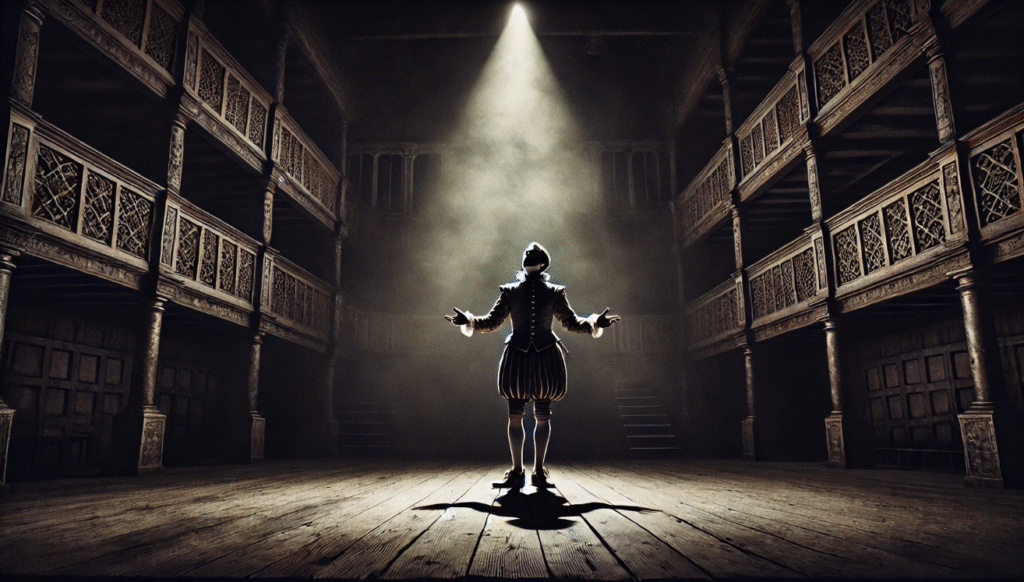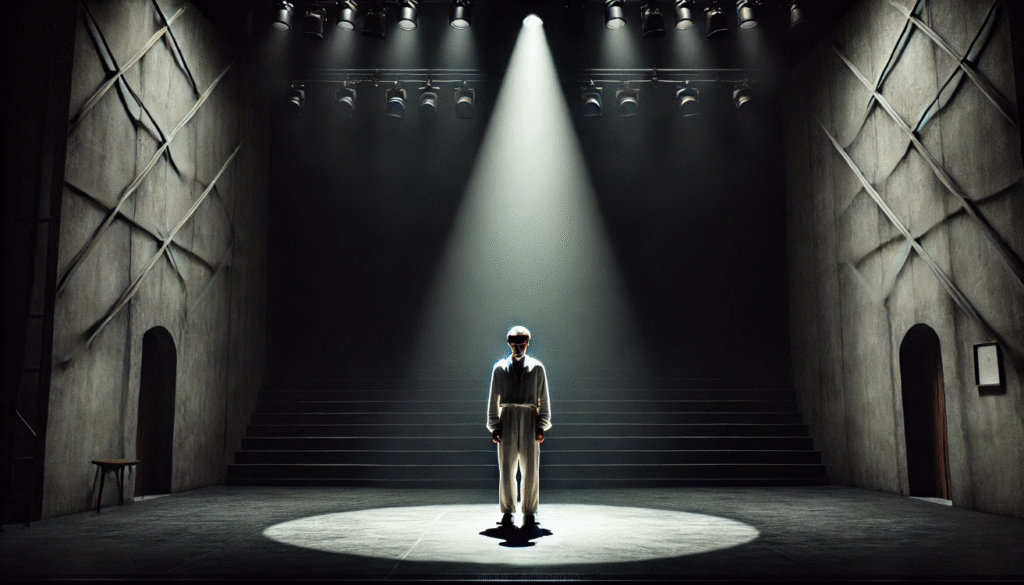 Major soliloquies in Shakespeare’s tragedies is widely regarded as a master of tragedy, with works such as “Hamlet,” “Macbeth,” and “Othello” showcasing his unparalleled ability to delve into the depths of human emotion and the complexities of the human condition. One of the key elements that sets Shakespeare apart as a master of tragedy is his use of soliloquies. Major soliloquies in Shakespeare’s tragedies, or the act of a character speaking their thoughts aloud on stage, serve as a window into the character’s innermost thoughts and feelings. They allow the audience to gain insight into the character’s motivations, fears, and desires, ultimately adding depth and complexity to the overall narrative.
Major soliloquies in Shakespeare’s tragedies is widely regarded as a master of tragedy, with works such as “Hamlet,” “Macbeth,” and “Othello” showcasing his unparalleled ability to delve into the depths of human emotion and the complexities of the human condition. One of the key elements that sets Shakespeare apart as a master of tragedy is his use of soliloquies. Major soliloquies in Shakespeare’s tragedies, or the act of a character speaking their thoughts aloud on stage, serve as a window into the character’s innermost thoughts and feelings. They allow the audience to gain insight into the character’s motivations, fears, and desires, ultimately adding depth and complexity to the overall narrative.
Understanding Soliloquies in Shakespearean Drama:

Major soliloquies in Shakespeare’s tragedies is a dramatic device where a character speaks their thoughts out loud, usually alone on stage. It allows the audience to gain insight into the character’s innermost thoughts and feelings, as well as providing exposition for the plot. Major soliloquies in Shakespeare’s tragedies are unique in their ability to provide a window into a character’s internal struggles and motivations, as well as serving to advance the storyline. They are often used to reveal a character’s true intentions or inner conflict, allowing the audience to develop a deeper understanding of the character’s psyche. In the works of Shakespeare, Major soliloquies in Shakespeare’s tragedies are particularly notable for their introspective and often philosophical nature.
Thematic Significance of Soliloquies in Shakespeare’s Tragedies:
Soliloquies in Shakespearean tragedies are often used to explore recurring themes such as fate, morality, ambition, and existentialism. They bring depth to these themes by allowing the audience to delve into the inner thoughts and struggles of the characters, providing insight into their motivations and moral dilemmas. In “Hamlet,” the titular character’s soliloquies provide a window into his existential crisis and his struggle with morality and fate. His famous “To be or not to be” soliloquy delves into the existential question of life and death, while others like “O, what a rogue and peasant slave am I!” reveal his moral turmoil over seeking vengeance for his father’s murder.
Soliloquies and Character Development:

Soliloquies provide insight into the psychological complexities of key characters by allowing them to express their inner thoughts and feelings without any external influence. This gives the audience a direct window into the character’s mind, allowing them to understand their motivations, conflicts, and internal struggles. Through soliloquies, audiences can gain a deeper understanding of the characters’ personalities and the complexities of their inner worlds, which adds depth and dimension to the overall narrative.
Examples:
Certainly! Each of these famous soliloquies from Shakespeare’s plays provides a window into the inner turmoil of the characters. In Hamlet’s soliloquy, he grapples with the idea of existence and the fear of the unknown. Macbeth’s soliloquy reflects his ambition and the growing guilt that plagues him. Othello’s soliloquies reveal his increasing jealousy and insecurity as he becomes consumed by doubt and suspicion. These powerful moments in the plays allow the audience to understand the complex emotions and motivations driving the characters’ actions.
Soliloquies as a Plot-Driving Mechanism:
Soliloquies are an important literary device that can significantly influence the trajectory of a plot. By allowing a character to express their inner thoughts and feelings directly to the audience, soliloquies provide insight into the character’s motivations, desires, and conflicts. This helps to develop the character and their relationships with other characters, which in turn can drive the plot forward. Soliloquies also serve to foreshadow future events, reveal key information, and create dramatic tension. Overall, soliloquies play a crucial role in shaping the development of a story and can have a profound impact on its trajectory.
Illustrations:
The soliloquies in both Hamlet and Macbeth play a crucial role in shaping the narrative and developing the characters. In Hamlet, the soliloquies serve to delay action by providing insight into the protagonist’s inner turmoil and indecision, building suspense as the audience waits to see how he will ultimately act. Similarly, in Macbeth, the soliloquies serve to foreshadow events and highlight the moral conflict within the protagonist, adding depth to the character and creating anticipation for the unfolding of the story. Overall, soliloquies in both plays contribute to the overall tension and complexity of the plot, making them an essential element of the dramatic structure.
Comparative Analysis of Major Soliloquies in Shakespeare’s Tragedies:
In comparing soliloquies across these three plays, we can identify patterns and contrasts in terms of tone, style, and purpose. In Hamlet, the soliloquies often convey the protagonist’s internal struggles and complex emotions, showcasing a reflective and philosophical tone. Macbeth’s soliloquies, on the other hand, highlight the character’s ambition and moral conflict, often with a sense of urgency and determination. In King Lear, the soliloquies reveal the character’s descent into madness and his grappling with themes of betrayal and power, conveying a sense of despair and disillusionment.
Emotional Resonance and Audience Connection:
Soliloquies allow audiences to step into the inner thoughts and emotions of a character, providing insight into their struggles, desires, and fears. This direct access to a character’s inner world helps audiences empathize with them, as they can better understand the motivations behind their actions and decisions. By witnessing a character’s inner turmoil and conflict, audiences can relate to their experiences and emotions, fostering a deeper connection and empathy towards the character. It is through soliloquies that audiences are able to see the universal aspects of human nature, making the characters more relatable and their stories more impactful.
Shakespeare’s Craftsmanship in Soliloquies:

When discussing linguistic brilliance, it’s important to consider the use of metaphors, imagery, and rhythm. Metaphors can add depth and complexity to language, allowing for multiple layers of meaning to be conveyed. Imagery, on the other hand, can paint vivid pictures in the reader’s mind, creating a sensory experience that enhances the overall impact of the writing. Rhythm, whether through the use of varied sentence structures or deliberate repetition, can create a musical quality that draws readers in and holds their attention. In terms of structural ingenuity, the placement and pacing of soliloquies in a narrative can be crucial.
Legacy of Shakespearean Soliloquies in Literature:

Shakespearean soliloquies have had a profound influence on later playwrights and authors. Many writers have been inspired by Shakespeare’s use of soliloquies to reveal the inner thoughts and emotions of their characters, and have incorporated similar techniques into their own works. Additionally, the enduring relevance of soliloquies in modern adaptations and performances demonstrates their continued power to captivate and engage audiences. The introspective nature of soliloquies allows for deep exploration of complex themes and emotions, making them a valuable tool for playwrights and authors across different time periods. Their ability to offer insight into the human experience ensures that soliloquies will continue to be a vital component of literature and theater.
Soliloquies are a key element in Shakespeare’s tragic plays, providing insight into the inner thoughts and conflicts of the characters. They allow the audience to understand the character’s motivations, fears, and desires, adding depth and complexity to the storytelling. Soliloquies continue to captivate readers and audiences because they offer a window into the human experience, exploring universal themes of love, power, and morality. The raw emotion and introspection found in soliloquies resonate with people across time and culture, making them an enduring and vital aspect of Shakespeare’s work.













